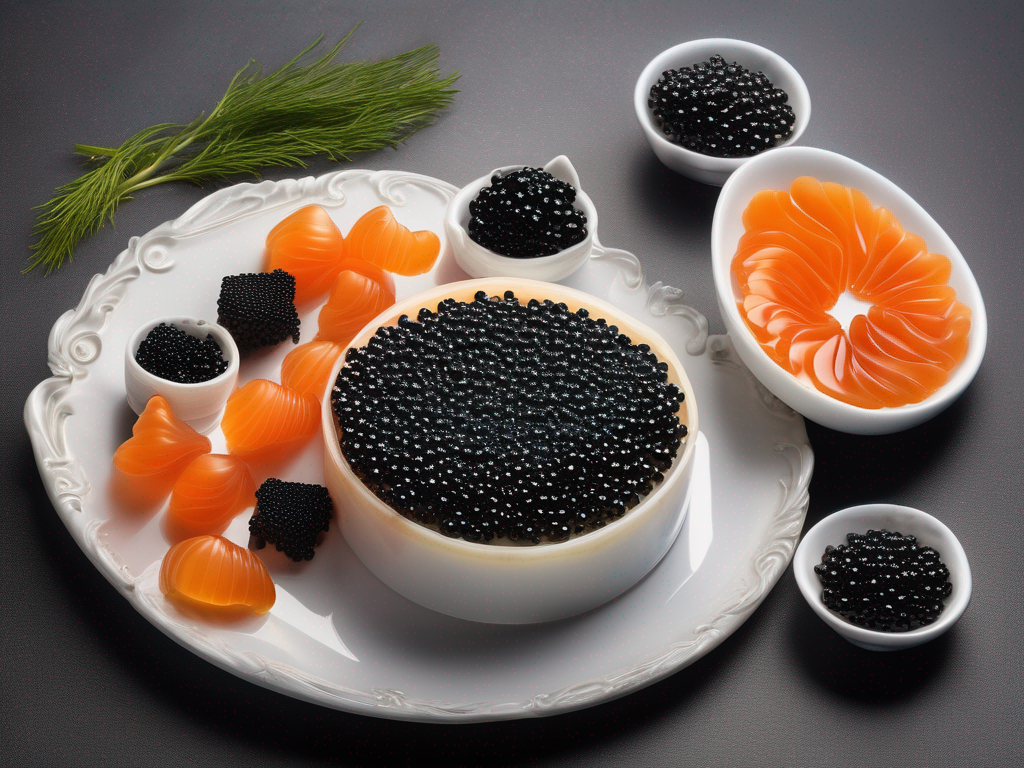
The Best Way to Store Caviar for Optimal Freshness
Get Your Free Food Safety Cheat Sheet
30 most common foods with instant answers. Print it and stick it on your fridge—completely free!
The Best Way to Store Caviar for Optimal Freshness
When it comes to storing caviar, a delicacy prized for its rich flavor and luxurious texture, proper storage is key to maintaining its freshness and flavor profile. Caviar is a perishable product that requires careful handling and storage to prevent spoilage. In this comprehensive guide, we will explore the best practices for storing caviar to ensure it stays fresh and delicious for as long as possible. (Caviar)
Importance of Proper Caviar Storage
Caviar, often referred to as the "black gold," is a highly perishable product made from the roe of sturgeon fish. Due to its delicate nature and high cost, it is essential to store caviar correctly to prevent it from spoiling and losing its quality. Proper storage not only helps maintain the flavor and texture of the caviar but also ensures food safety by minimizing the risk of bacterial contamination.
Factors Affecting Caviar Freshness
Several factors can impact the freshness and quality of caviar, including:
- Temperature
- Light exposure
- Air exposure
- Odor absorption
- Moisture levels
Best Practices for Storing Caviar
To maximize the shelf life and preserve the delicate flavor of caviar, follow these best practices for storing caviar:
1. Temperature Control
- Store caviar at a consistent temperature between 28°F to 32°F (-2°C to 0°C) to maintain its freshness.
- Avoid fluctuations in temperature, as exposure to heat can cause the caviar to spoil quickly.
- Use a refrigerator to store caviar, preferably in the coldest part of the fridge, such as the back of the bottom shelf.
2. Packaging
- Keep caviar in its original packaging or transfer it to an airtight container to prevent exposure to air and odors.
- Ensure the packaging is tightly sealed to minimize air contact, which can cause oxidation and spoilage.
- Use a container made of non-reactive material, such as glass or stainless steel, to avoid any chemical interactions that can affect the caviar's flavor.
3. Light Protection
- Shield caviar from direct sunlight and artificial light to prevent degradation of its quality.
- Store caviar in a dark or opaque container to protect it from light exposure.
- Avoid transparent containers or packaging that allows light to penetrate, as it can affect the caviar's taste and texture.
4. Odor Control
- Keep caviar away from strong-smelling foods in the refrigerator to prevent it from absorbing unwanted odors.
- Consider storing caviar in a separate compartment or drawer in the fridge to avoid cross-contamination with other foods.
- If transferring caviar to a different container, ensure it is odor-free and clean before use.
5. Shelf Life
- Check the expiration date on the caviar packaging and consume it before the recommended date for optimal freshness.
- Once opened, consume caviar within a few days to enjoy it at its best quality.
- Avoid storing leftover caviar for an extended period, as it is a highly perishable product.
Conclusion
Proper storage is crucial for maintaining the freshness and quality of caviar. By following these best practices, you can enjoy this luxurious delicacy to its fullest potential. Remember to store caviar in a cool, dark, and odor-free environment, and consume it promptly for the best culinary experience. By taking care of your caviar properly, you can savor its exquisite taste and texture for as long as possible.
For more information on caviar and other gourmet foods, visit our caviar section. (Caviar)
Authoritative Food Safety References
These agencies and university labs inform every tip and health precaution we publish.
USDA FoodKeeper – Cold Storage Guidelines
Official refrigerator, freezer, and pantry timelines maintained by the U.S. Department of Agriculture.
Visit USDA FoodKeeperFDA Produce Safety Rule & Grower Guidance
Field-to-fridge handling practices that prevent contamination of fruits, vegetables, and leafy greens.
Visit FDA Produce SafetyCDC Foodborne Illness Prevention Hub
Surveillance-backed guidance on pathogens, symptoms, and steps to reduce foodborne illness risk.
Visit CDC Food SafetyUC Davis Postharvest Technology Center
University research detailing optimal storage atmospheres for produce after harvest.
Visit UC Davis PostharvestPenn State Extension – Home Food Preservation & Safety
Peer-reviewed extension bulletins on safe canning, chilling, and reheating practices.
Visit Penn State ExtensionGet Your Free Food Safety Cheat Sheet
30 most common foods with instant answers. Print it and stick it on your fridge—completely free! Want more? Upgrade to the complete guide with 70+ foods.
Scan your food directly and get instant safety info using our AI-powered camera feature.